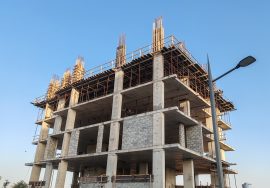
Sustainable Building Materials: The Future of Green Construction
Sustainable Building Materials: The Future of Green Construction
The demand for sustainable building materials has grown rapidly as the world focuses on reducing environmental impact and conserving resources. These eco-friendly materials not only lower carbon emissions but also improve energy efficiency and durability. In the modern construction industry, sustainability is no longer a luxury — it’s a responsibility.
What Are Sustainable Building Materials?
Sustainable building materials are those that have minimal environmental impact throughout their life cycle — from production to disposal. They are renewable, recyclable, and energy-efficient, designed to promote environmental balance and reduce waste. Examples include bamboo, recycled steel, rammed earth, cork, and reclaimed wood.
Using sustainable building materials helps reduce reliance on non-renewable resources, minimizes pollution, and supports green construction practices. This approach aligns with the global goal of achieving net-zero carbon emissions in the built environment.
Benefits of Using Sustainable Building Materials
The use of sustainable building materials offers numerous environmental, economic, and health benefits that make them the preferred choice for modern architects and developers.
1. Environmental Protection
Eco-friendly materials such as bamboo, recycled concrete, and hempcrete reduce greenhouse gas emissions and conserve natural ecosystems. By using sustainable building materials, builders help mitigate climate change.
2. Energy Efficiency
Many sustainable building materials improve insulation and thermal performance, reducing the need for artificial heating and cooling. Materials like cork, straw bales, and recycled insulation boards help maintain indoor comfort while saving energy.
3. Cost-Effectiveness
Though some sustainable materials have a higher initial cost, they offer long-term savings through lower maintenance, reduced energy bills, and improved durability.
4. Waste Reduction
Recycling and reusing construction materials minimizes landfill waste. Sustainable practices ensure resources are efficiently used and repurposed, promoting a circular economy.
5. Healthier Living Spaces
Natural materials such as clay, lime plaster, and non-toxic paints create better indoor air quality and a healthier environment for occupants.
Top Sustainable Building Materials Used Today
Let’s explore some of the most innovative and widely used sustainable building materials in the construction industry.
1. Bamboo
Bamboo grows quickly and absorbs carbon dioxide, making it one of the most sustainable construction materials. It’s strong, lightweight, and ideal for flooring, walls, and even structural supports.
2. Recycled Steel
Steel is infinitely recyclable without losing strength. Using recycled steel reduces energy consumption and mining-related environmental damage.
3. Hempcrete
Made from hemp fibers, lime, and water, hempcrete is a lightweight, breathable, and carbon-negative material. It’s excellent for insulation and sustainable wall systems.
4. Rammed Earth
This ancient technique uses compacted earth to create strong, durable, and energy-efficient walls. Rammed earth structures offer natural insulation and aesthetic appeal.
5. Reclaimed Wood
Reclaimed timber from old buildings and furniture gives a new life to wood that would otherwise go to waste. It adds character while reducing deforestation.
6. Solar Tiles
Solar roof tiles combine renewable energy generation with construction efficiency, making them an innovative addition to sustainable building .

Sustainable Construction in India
India is at the forefront of green innovation. Many builders are now adopting sustainable building to reduce the environmental footprint of urban development.
Government initiatives like the Green Building Rating System (GRIHA) and LEED India promote eco-friendly construction practices. Organizations such as The Energy and Resources Institute (TERI) are actively driving research and awareness around sustainability in architecture.
Challenges and the Path Forward
Despite progress, challenges such as high upfront costs, limited availability, and lack of awareness still hinder widespread use of sustainable building . To overcome these barriers, industries must invest in research, government policies should incentivize green construction, and consumers should be educated about the long-term benefits.
As sustainable technologies advance, costs are expected to drop, making eco-friendly materials more accessible and affordable for all sectors.
Conclusion
The use of sustainable building is revolutionizing how we design and construct our spaces. By choosing materials that are renewable, recyclable, and energy-efficient, the construction industry can play a major role in combating climate change.
Building a sustainable future begins with the materials we select today. To learn how to incorporate eco-friendly solutions in your next project, contact AMS India — experts in sustainable and energy-efficient construction.
Read more related articles to enhance your knowledge and make informed decisions
Cost-Effective Modular Construction: Fast, and Sustainable Building Solutions
Smart Modular Buildings: Innovative, Efficient, and Sustainable Construction








